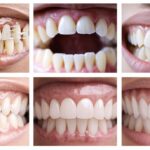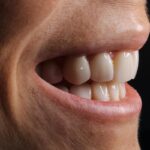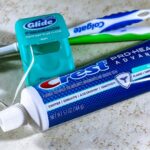Pain Management
Post-operative pain is a normal part of the healing process after TMJ surgery. Your doctor may prescribe narcotic analgesics like Percocet or Vicodin for immediate relief. Take these as directed to manage the pain that might follow the procedure.
Applying ice packs during the first 48 hours post-surgery can help reduce swelling and numb the pain. Wrap the ice pack in a cloth to avoid direct skin contact, and use it for twenty minutes at a time.
Sleeping with several pillows to keep your head elevated can also aid in reducing swelling, minimizing post-surgical bruises, and managing pain. Maintaining an inclined position while sleeping is an effective way to ward off pain surges after TMJ surgery.
Attend all scheduled post-operative consultations to ensure your healing is monitored and necessary adjustments in pain management can be made. This continued supervision helps prevent unnecessary discomfort.
Transitioning from softer diets back to regular foods should be done slowly, listening to your body’s signals. Taking this process gradually ensures you don’t aggravate the freshly treated joint.
Engaging in light activities like reading, listening to music, or solving puzzles can distract from discomfort and promote a peaceful environment conducive to a quicker recovery.
Each strategic point in your pain management regimen for TMJ surgery recovery serves as a step towards healing. Adhering to them diligently is crucial in regaining healthy jaw function.
Dietary Adjustments
During the first days post-operation, your diet should consist entirely of smooth and easily consumable liquids like broths and smoothies. Ready-to-drink protein shakes are also recommended for providing the strength needed for effective recovery. Blending various fruits and vegetables into smoothies ensures an intake of essential vitamins and minerals without the need for chewing.
As you progress in healing, transitioning to soft foods like yogurt, mashed potatoes, and finely scrambled eggs will ease the work of your jaw while still providing nourishment. Focus on nutrient-dense foods during this period; for example, oatmeal can be prepared to a very soft consistency and enriched with bananas or nut butter for additional nutritional value.
The goal through these dietary stages is to minimize jaw movement by emphasizing textures that require minimal effort to consume. Consuming smaller, more frequent meals can also ease the burden on your digestion and make food intake less daunting. Staying well-hydrated by sipping water continuously throughout the day assists in normal body operation and healing.1
Every dietary choice post-TMJ surgery should prioritize comfort and efficient contribution to healing. By methodically adjusting what you eat and how you consume it, you set a strong foundation for a speedy and more bearable recovery process.

Wound Care
Maintaining diligent care of your surgical wounds is crucial for preventing infections and facilitating swift healing after TMJ surgery.
- Gently clean the area using a diluted solution of hydrogen peroxide and water to ward off bacteria that may lead to infections. Dab the area delicately, taking care not to disrupt sutures or irritate sensitive post-surgical tissues.
- Apply an antibiotic cream such as Neosporin, as directed by your surgeon, to provide an added shield against infection while supporting the natural healing process of your skin.
- Keep the surgical site dry. After showering, pat the area dry with a soft towel using gentle motions to avoid irritating the wound or dislodging healing tissues.
Integrating these simple yet effective strategies into your postoperative routine helps stave off possible complications and paves the way for a smoother recovery. Thorough wound care should take precedence in your recovery checklist, approaching it with the same diligence and attention given to other critical components of your recovery to ensure the best possible outcomes.
Physical Therapy
Physical therapy is an integral component of the recovery process after TMJ surgery, focusing on restoring the function and mobility of your jaw through targeted exercises. Starting these exercises soon after surgery can significantly aid in smoothing and speeding up your recovery journey.
The primary exercises in your physical therapy routine will involve jaw opening, lateral movements, and gentle stretching exercises aimed at maintaining or increasing the flexibility of the jaw muscles and joint. Perform these exercises consistently several times daily for successful rehabilitation.
One fundamental exercise is the controlled jaw opening: place a stack of tongue depressors between your teeth and attempt to open your jaw gently without straining. Gradually increasing the stack will help enhance your ability to open your jaw wider over time.2 For lateral movements, move your jaw from side to side as smoothly as possible to maintain the range of motion and reduce the risk of stiffness or locking.
Each physical therapy session should start gently and increase in intensity only according to your comfort level, avoiding abrupt or forceful movements that might exacerbate pain or cause re-injury. Use a mirror during exercises to ensure movements are done symmetrically, aiming for equal movement on both sides of the face whenever possible.
Whether performed at home or under the supervision of a physical therapist, these exercises empower you by putting part of your recovery in your own hands. Incorporating them into your daily routine allows you to tangibly measure progress and provides a motivational boost.
Regular follow-ups with your healthcare provider or physical therapist are essential to evaluate your progress and adjust your regimen based on your healing needs.
Taking an active role in your physical therapy can significantly restore normal jaw function, help keep complications at bay, and reclaim your overall quality of life sooner. Patience, perseverance, and diligent adherence to prescribed therapeutic activities are your best allies in this gradual process.
Effective TMJ surgery recovery relies on diligent adherence to prescribed therapeutic activities. By embracing each aspect of the recovery process—from thorough wound care to strategic dietary adjustments and dedicated physical therapy—patients can significantly enhance their healing journey and reclaim their quality of life.
- Forouzanfar T, Sabelis A, Ausems S, Baart JA, van der Waal I. Effect of ice compression on pain after mandibular third molar surgery: a single-blind, randomized controlled trial. Int J Oral Maxillofac Surg. 2008;37(9):824-830.
- Yura S, Totsuka Y, Yoshikawa T, Inoue N. Can arthrocentesis release intracapsular adhesions? Arthroscopic findings before and after irrigation under sufficient hydraulic pressure. J Oral Maxillofac Surg. 2003;61(11):1253-1256.









